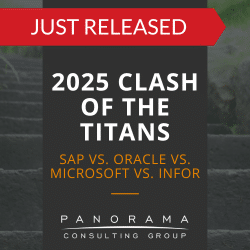With a focus on automation, interconnectivity, and data exchange, Industry 4.0 is revolutionizing the way we approach manufacturing.
While this technological shift promises to streamline operations and increase efficiency, it also presents a host of challenges.
Today, we’re exploring some of the biggest Industry 4.0 challenges that can lead to digital transformation failure. Whether you’re a seasoned professional or just starting to explore the world of Industry 4.0, this post will help you succeed in the fourth industrial revolution.
Six Industry 4.0 Challenges
1. Maintaining Connectivity
The Internet of Things (IoT) shows no sign of slowing down in Industry 4.0. Now, we have even more equipment, people, and devices speaking to one another. To get ahead in this space, companies must ensure that communications always remain open and smooth.
Dependable, around-the-clock connectivity is a critical requirement, especially in manufacturing and supply chain environments that rely on IoT to support everyday operations. If you’re looking for the best ERP system for manufacturing, look for something that provides continuous uptime and robust wireless solutions, including:
• Wi-Fi
• Cellular
• Low-powered Wide Area Networks (WANs)
Right now, 4G/LTE options are the most common. However, a transition to 5G is imminent and it’s important to prepare for this eventual shift. By moving operations onto a 5G network, companies can better leverage the features provided by Industry 4.0 applications, including:
• Flexible production settings
• Collaboration for mobile robots and autonomous devices
• Advanced mobile application support
• Massive machine-type communications (mMTC)
• Ultra-reliable low-latency communications (URLLC)
Contemplating litigation?
We have multiple software expert witnesses available for provision of reports, depositions, and testimonies.
2. Preventing Cybersecurity Attacks
One major aspect of Industry 4.0 is the convergence of information technology (IT) systems and operational technology (OT).
While there are benefits to merging these two areas, it can also heighten a company’s cybersecurity risk. Until now, industrial automation has largely relied on traditional, wired communication to send and receive information. As such, security threats haven’t been as prominent.
However, shared IT/OT spaces rely on wireless connectivity to operate. This creates an expanded attack surface, giving hackers even more room to infiltrate.
Companies embracing Industry 4.0 are realizing they need to double down on their enterprise security architectures to support their growing number of connected applications.
If you want to address this Industry 4.0 challenge, your key areas of focus should be:
• Device authentication
• Data integrity
• Data confidentiality
Again, 5G can support this area of IoT development, with security features that include:
• Mutual authentication and data encryption between networks and devices
• Support for flexible authentication frameworks (via Extensible Authentication Protocol (EAP) and encryption)
• Support for strict latency requirements
3. Ensuring Workplace Safety
Monitoring workplace safety has always been a chief concern at all companies, especially ones that operate in an industrial environment with many moving parts. As new manufacturing software systems and technologies enter these spaces, it’s important to ensure that all employees know how to use them safely.
Thankfully, newer-model IoT devices can help in this regard. Many include features that monitor environmental and performance metrics in real-time. If any conditions teeter close to the minimum, pre-determined safety standards, these machines can alert personnel so they can act before an accident or injury occurs.
If you’re looking to transition to 5G, you may want to review your current IoT strategies. Make sure your safety policy clearly aligns with applications you’re currently running, including those you plan to migrate to 5G.
4. Navigating Talent Gaps
Industry 4.0 holds much potential for businesses in nearly every niche. However, to access these benefits and avoid digital transformation failure, you’ll need the right people on your team.
This step is often easier said than done. Many companies are already realizing that skillset and talent gaps could undermine even their best-laid plans to embrace this new wave of industrialization.
As you plan your own digital transformation, think about the employees you currently have on staff. Any time an OT specialist leaves or retires, they’ll take their unique skills, experience, and expertise with them.
To address this Industry 4.0 challenge, it’s important to create effective recruiting and retention plans that attract top talent and encourage talent to stay.
5. Handling Data Requirements
Organizations are still producing vast amounts of data each day, and this capability will only expand with Industry 4.0. The amount of information generated and shared can be overwhelming, especially as more devices interface with one another.
Many companies are realizing they need more storage and processing power to keep up with these demands. They also are realizing their need to hire specialists who have the skills and training required to manage and analyze this data.
6. Keeping Operations Efficient
With so many systems and components working at the same time, companies need a way to quickly react and respond as conditions change. One small pivot could affect the entire supply chain, so connected environments must remain on alert.
Increasingly, companies are turning to edge computing solutions to address this Industry 4.0 challenge. Edge computing is an approach that brings networks and devices closer to the source of the data. The idea is that by processing data closer to where it’s being generated, users can achieve greater processing speeds and volumes.
As we enter the 5G era, these networks are poised to deliver even faster speeds and lower latency, supporting edge computing applications and the users that rely on them.
Avoid These Industry 4.0 Challenges
Organizations planning to adopt Industry 4.0 technologies don’t have to feel defeated by these potential issues. The key to finding success in this space is acknowledging the Industry 4.0 challenges that can arise and creating a roadmap to avoid them.
As new devices become available, it will be important to partner with an ERP consulting company that understands IoT and knows what’s on the horizon. To speak to our consultants and learn how we can help, contact us below.













